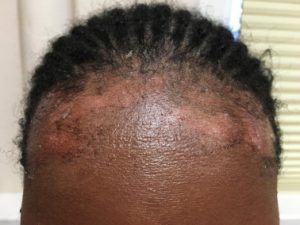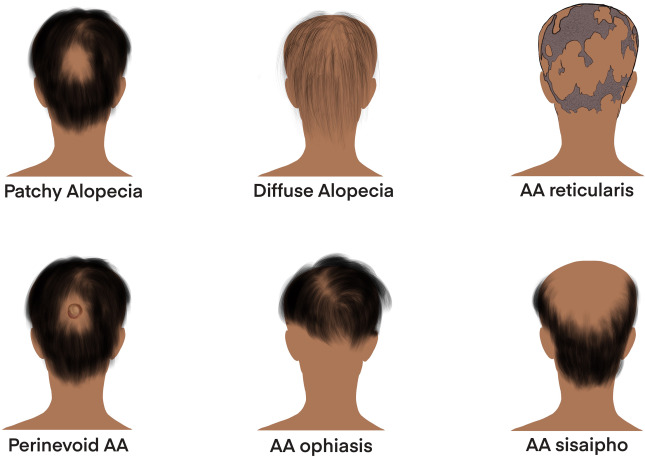Alopecia is a medical condition where the hair starts to fall off in patches. This can affect either the hairs on the scalp, face, and body or, as it is in some extreme cases, all of them at the same time. This disease is said to be an auto-immune condition as it is caused when the immune system attacks the hair follicles which serve as the structures on the skin where the hair grows out from.
Who can get alopecia?
The fact that we have more men spotting bald looks around us has helped to groom the erroneous belief that alopecia is a disease mainly associated with the male gender. However, on the contrary, alopecia is a disease that can affect anyone – regardless of age, gender, race, or ethnic group.

There have been different myths and false beliefs regarding alopecia and genetics being peddled around in society. Some people believe that a parent suffering from this disease automatically means their offspring would also have it passed down to them. However, scientists have come out to tell us that since the disease is polygenic – meaning that both parents have to contribute a number of specific genes, unlike what you have in a single-gene disease – the chances are very slim.
Even in the case of identical twins where all the genes are shared, the chance that one of them having the disease would affect the other is just a mere 55%. This goes on to further prove that even though having a close family can only increase your likelihood of getting it but doesn’t make it automatic.
Suffering from other autoimmune diseases like vitiligo and psoriasis means you stand quite a high risk of getting alopecia areata. The same applies to those who are battling thyroid diseases and hay fever.
Types of alopecia areata

Alopecia areata is of three different types:
• Patchy alopecia areata: this is characterized by the loss or falling out of one or more coin-shaped sizes of hair on the scalp, face, or body parts. This type of alopecia areata is the most common around.
• Alopecia totalis: This is a condition where the entire hair on the scalp falls out.
• Alopecia universallis : this is an extreme form of alopecia totalis. Here in addition to total loss of the hair on the scalp, the hairs on the face and entire body all fall off too. This also applies to the eyebrows and eyelashes.
Symptoms of alopecia areata

Just as we have been discussing all through, the most prominent tell-tale sign that is associated with this condition is hair loss. The hair on the head starts to fall out in coin-shaped patches. Sometimes you notice hairs with abnormal growth around the edges of the patch. Th
ese hairs look exclamation point-like, with the base looking narrower than the tip.
Hair loss might also be experienced in other parts apart from the scalp; eyelashes, eyebrows, beard, and other facial hairs can also be affected, while body hairs like armpits, arms, chests, fingers, and others also fall off in extreme conditions.
While some people might experience hair loss in a single or a couple of areas, others could be affected in multiple places. Some people relaying their early experiences have told stories of how they slept and woke up to little chunks of hairs on their pillow.
They were shocked to later find out in the mirror that it was actually from their scalp and not a goblin or a troll. It could get even more embarrassing as others weren’t even that lucky enough to find out themselves and had to have it pointed out to them by people around, especially if it happens at the back part of the scalp.
While the hair loss on the patches tends to grow out again after a while in the cases of those with mild cases, it could degenerate into entire and permanent loss in more severe cases.
Nail changes, such as; ridges and pits- have also been observed in extreme cases.
Remedies

While it is important to note that there are no scientifically-proven cures for alopecia areata, there are still some remedies that can help to either slow down the hair loss process or aid quick re-growth.
The fact that the disease is also quite unpredictable means you might have to try out several suggested remedies to find one that suits your condition.
Treatment isn’t always successful either, and a remedy that looks to be working perfectly fine for a while might suddenly become ineffective – quite a tough one to deal with. The below-mentioned options have however worked for myriads of people battling this challenge and could just be one that would work for you.
• There are a couple of drugs that can be rubbed into the affected areas as topical agents to stimulate growth, examples of these are rogaine and anthralin. Some corticosteroid creams like clobetasol and foams are also said to be helpful as they help to fight the inflammation in the hair follicles.
• Steroids can also be injected into the bald spots to help stall the process of hair loss. This process however has to be repeated at close intervals – every one or two months – to be effective.
• Apart from injecting remedies and topical agents, other options can be taken orally. Cortisone and immune suppressants like methotrexate and cyclosporine work to block the response of the immune system in a bid to stop hair fall. There however, is a need to consult with a doctor first because of the risk of possible side effects.
• The invention of laser and light technology also adds to the options available. This treatment employs the use of laser beams to stimulate hair growth.
Conclusion
Living with alopecia areata can be quite a challenge. The fact that its highly unpredictable nature makes it quite hard to treat also makes it even more complicated. The above-prescribed remedies are some of the most reliable available options for treatment. Professional advice is however needed.


